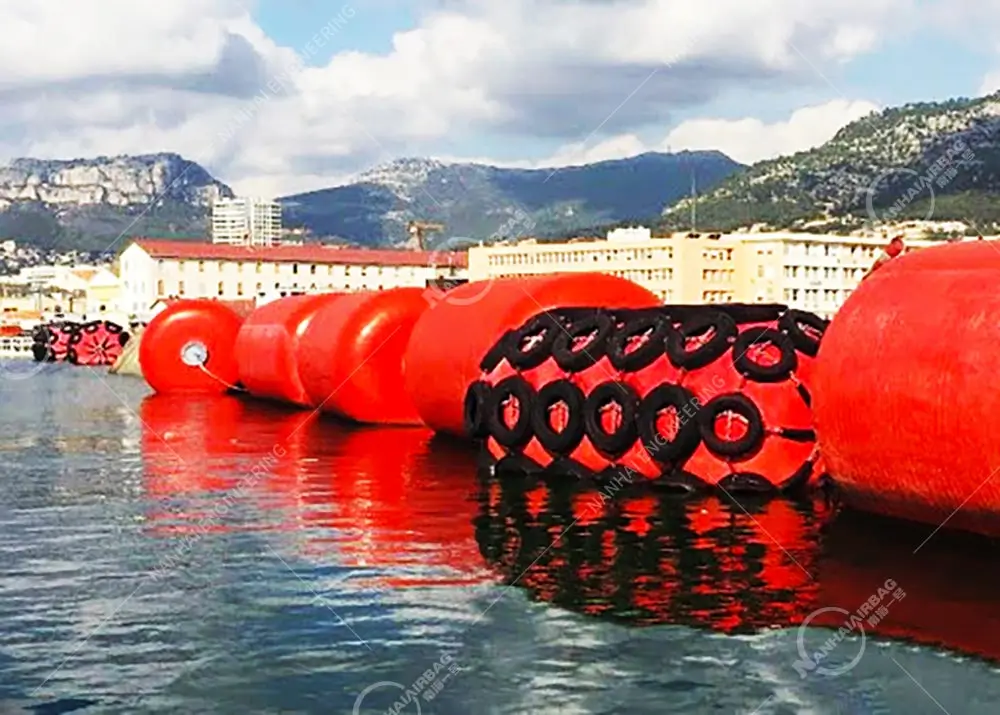Advantages of Using Pneumatic Fenders in Shipping
05/16/2025High-Performance Pneumatic Fenders for Ship and Port Protection
05/19/2025What is the density of foam fenders?
Foam fenders typically have a density ranging from 30 to 130 kg/m³, depending on their intended application and performance requirements. This density range allows for customization in energy absorption and reaction force characteristics, making foam fenders suitable for various marine environments.

Understanding Foam Fender Density
Foam fender is essential components in marine operations, protecting vessels from berthing and mooring. The density of the foam core is a critical factor influencing the fender’s performance.
What is Foam Fender Density?
Foam fender density refers to the mass per unit volume of the foam material used in the fender’s core, typically measured in kilograms per cubic meter (kg/m³). Higher density foams offer greater energy absorption and resistance to deformation, while lower density foams provide more flexibility and lighter weight.
Common Density Ranges
- Low-Density Foam (≤35 kg/m³): Suitable for small vessels and calm waters where minimal impact absorption is required.
- Medium-Density Foam (≥60 kg/m³): Ideal for general-purpose applications, offering a balance between energy absorption and flexibility.
- High-Density Foam (70–75/130 kg/m³): Designed for heavy-duty applications, such as large ships and harsh marine environments, providing maximum energy absorption and durability.
For instance, NANHAI’s foam-filled fenders utilize PE foam cores with densities ranging from 30 to 130 kg/m³, offering excellent energy absorption and low water absorption rates.
Applications of Foam Fender
Foam fenders are versatile and used across various marine sectors:
- Ship-to-Ship Transfers: Providing cushioning between vessels during cargo transfers.
- Port and Harbor Facilities: Protecting docks and piers from vessel impacts.
- Offshore Platforms: Ensuring safe mooring of supply vessels.
- Military and Commercial Ships: Safeguarding hulls during berthing operations.
Their closed-cell foam construction ensures buoyancy and resilience, even if the outer skin is damaged.
Ship Launching Airbags: A Related Technology
While discussing marine cushioning solutions, it’s worth mentioning ship launching airbags. These are specialized inflatable devices used to launch ships into the water without the need for traditional dry docks. They offer a cost-effective and flexible alternative for shipyards, especially in areas with limited infrastructure.
Why Choose Foam-Filled Fenders?
- Durability: Resistant to punctures and harsh marine conditions.
- Low Maintenance: No need for inflation; minimal upkeep required.
- Customizable: Available in various sizes and densities to suit specific needs.
- Safety: Provides consistent performance, reducing the risk of vessel damage.
People Also Ask
What materials are used in foam fender?
Foam fenders typically consist of a closed-cell foam core (such as EVA or polyethylene) encased in a tough polyurethane skin, often reinforced with nylon or polyester fabrics for added strength.
How do foam fenders compare to pneumatic fenders?
Foam fenders are solid and do not rely on air pressure, making them less susceptible to punctures and requiring less maintenance compared to pneumatic (air-filled) fenders.
Can foam fenders be customized?
Yes, manufacturers offer foam fenders in various sizes, shapes, and densities to meet specific operational requirements.
For marine operators seeking reliable and durable fendering solutions, foam-filled fenders offer a combination of performance, longevity, and low maintenance. Whether for commercial ports, naval applications, or offshore platforms, these fenders provide essential protection for vessels and infrastructure alike.
